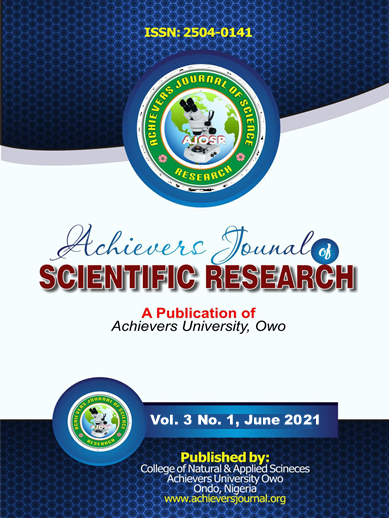Identification of the Functional Groups, Radical Scavenging Ability and Antimicrobial Properties of the Extract of Cleistopholis patens
Abstract
Medicinal plants have been evaluated over the years as a source of important biological and pharmacological substances. This work investigated the radical scavenging ability, the functional group present in ethyl acetate extract of stem bark of Cleistopholis patens and the antimicrobial activities against bacterial and fungal strains. The radical scavenging ability of the plant was significant although reduced compared to ascorbic acid. In the FTIR spectra recorded, the vibrational assignments, intensities and wave number (cm-1) of dominant peak were obtained from absorption spectra. Probable assignments of the bands were made with respect to the components present in the extracts. By these analysis, functional groups such as amino-acids, amides, amines, carboxylic acid, carbonyl compounds, organic hydrocarbons, halogens, alcohols, phenols, sulfonamides amongst others were detected inthe extract. The antimicrobial effect revealed considerable antibacterial activity against Proteus vulgaris, Klebsiella aerogenes, and Yersinia enterocoliticawhile no antifungal activities were recorded for Aspergillus niger, Acremoniumcoprophilum and Syncephalastrum racemosum. The presence of the functional groups as revealed by the IR spectra is responsible for the biological activities expressed by the plant extract.





